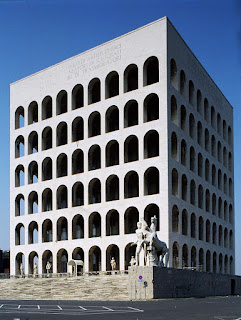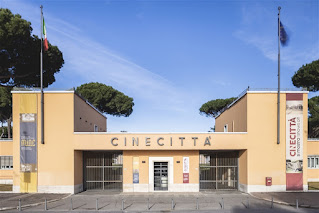Giulio Einaudi - publisher
Son of future president who defied Fascists
Giulio Einaudi, who founded the pioneering publishing house that carries the family name, was born on this day in 1912 in Dogliani, a town in Piedmont. The son of Luigi Einaudi, an anti-Fascist intellectual who would become the second President of the Italian Republic, Giulio was also the father of the musician and composer Ludovico Einaudi. Giulio Einaudi’s own political leanings were influenced by his education at the Liceo Classico Massimo d'Azeglio, where his teacher was Augusto Monti, a staunch opponent of Fascism who was imprisoned by Mussolini’s regime in the 1920s. After enrolling at the University of Turin to study medicine, Einaudi decided to abandon his studies to work alongside his father Luigi in publishing an anti-Fascist magazine Riforma Sociale. His own contribution was to establish a cultural supplement, edited by the writer and translator Cesare Pavese, which so offended Mussolini that in 1935 the magazine was closed down and the staff arrested. Einaudi spent 45 days in jail along with Pavese and several writers who would later become celebrated names, including Vittorio Foa, Massimo Mila, Carlo Levi and Norberto Bobbio. Read more…
________________________________________
Piero di Cosimo – painter
Florentine artist achieved world wide recognition
A Renaissance artist famous for his elaborate landscapes, Piero di Cosimo was born on this day in Florence in 1462. His paintings are now in galleries all over the world and experts credit him with bringing the Renaissance spirit into the 16th century, while adding vivacity and lyricism. The painter was born Piero di Lorenzo di Chimenti, but he became known as Piero di Cosimo after being apprenticed to the painter Cosimo Rosselli, with whom he frescoed the walls of the Sistine Chapel. Early in his career he was influenced by the Flemish artist, Hugo van der Goes, and from him acquired a love for painting the countryside with all the plants and animals in great detail. Piero di Cosimo eventually moved to Rome where he began painting scenes from classical mythology and he also developed a reputation for eccentric behaviour among his fellow artists. But he was regarded as an excellent portrait painter and regularly received commissions. His most famous portrait, of a Florentine noblewoman, Simonetta Vespucci, who was the mistress of Giuliano dè Medici, is now in a gallery in France. Read more…
______________________________________
Riccardo Cassin – mountaineer
Long life of partisan who was fascinated by mountains
The climber and war hero Riccardo Cassin was born on this day in 1909 at San Vito al Tagliamento in Friuli. Despite his daring mountain ascents and his brave conduct against the Germans during the Second World War, he was to live past the age of 100. By the age of four, Cassin had lost his father, who was killed in a mining accident in Canada. He left school when he was 12 to work for a blacksmith but moved to Lecco when he was 17 to work at a steel plant. Cassin was to become fascinated by the mountains that tower over the lakes of Lecco, Como and Garda and he started climbing with a group known as the Ragni di Lecco - the Spiders of Lecco. In 1934 he made his first ascent of the smallest of the Tre Cime di Lavaredo in the Dolomites. The following year, after repeating another climber’s route on the north west face of the Civetta, he climbed the south eastern ridge of the Trieste Tower and established a new route on the north face of Cima Ovest di Lavaredo. In 1937 Cassin made his first climb on the granite of the Western Alps. Over the course of three days he made the first ascent of the north east face of Piz Badile in the Val Bregaglia in Switzerland. Read more…
_____________________________________
Pope John II
First Pope to choose a regnal name
John II became Pope on this day in 533 in Rome, the first pontiff to take a new name after being elevated to the Papacy. John had considered his birth name of Mercurius to be inappropriate as it honoured the pagan god, Mercury. He chose John as his regnal name - or reign name - in memory of Pope John I, who was venerated as a martyr. Mercurius was born in Rome and became a priest at the Basilica di San Clemente, a church with ancient origins near the Colosseum. At that time in history, simony - the buying and selling of church offices - was rife among the clergy. After the death of Pope John II’s predecessor, there was an unfilled vacancy for more than two months, during which some sacred vessels were sold off. The matter was brought to the attention of the Roman Senate, which passed its last-known decree, forbidding simony in papal elections. This decree was confirmed by the Gothic King, Athalaric, who ordered it to be engraved in marble and placed in St Peter’s Basilica. He added a stipulation that if a disputed election took place in the future, a sum of money was to be paid by the Roman clergy, which would be distributed among the poor. Read more…
______________________________________
Book of the Day: Censorship and Literature in Fascist Italy, by Guido Bonsaver
The history of totalitarian states bears witness to the fact that literature and print media can be manipulated and made into vehicles of mass deception. Censorship and Literature in Fascist Italy is the first comprehensive account of how the Fascists attempted to control Italy's literary production. Guido Bonsaver looks at how the country's major publishing houses and individual authors responded to the new cultural directives imposed by the Fascists. Throughout his study, Bonsaver uses rare and previously unexamined materials to shed light on important episodes in Italy's literary history, such as relationships between the regime and particular publishers, as well as individual cases involving renowned writers like Moravia, Da Verona, and Vittorini. Censorship and Literature in Fascist Italy charts the development of Fascist censorship laws and practices, including the creation of the Ministry of Popular Culture and the anti-Semitic crack-down of the late 1930s. Examining the breadth and scope of censorship in Fascist Italy, from Mussolini's role as 'prime censor' to the specific experiences of female writers, this is a fascinating look at the vulnerability of culture under a dictatorship.Guido Bonsaver, Ph.D, is Professor of Italian Cultural History at the University of Oxford. He is a Fellow of Pembroke College and a tutor at Merton, Queen's and Wadham College. As well as censorship during the Fascist regime, his areas of research include immigration in contemporary Italian cinema and the influence of American culture in post-unification Italy.


.jpg)
.jpg)


.jpg)
.jpg)



.jpg)
.jpg)


.jpg)


.jpg)

.jpg)







_-_DSC05924.JPG)
.jpg)

.jpg)
.jpg)



_2%20(2).jpg)

.jpg)
.jpg)
